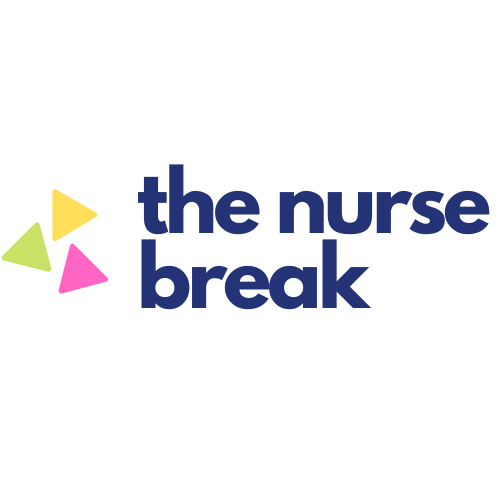Table of Contents
A Victorian Hems Paramedic relationship with nurses
About
Author for The Nurse Break: Darren Hodge
I began a career in ambulance over 30 years ago. I have enjoyed several operational roles, the highlight being a MICA Flight Paramedic (MFP) with Air Ambulance Victoria (AAV), working primarily on ambulance helicopters. https://www.ambulance.vic.gov.au/
I have also have a love of education and am currently a senior lecturer at Monash University (Post Graduate) teaching in both Aeromedical Retrieval and Intensive Care programs.
I have also just released a professional memoir ‘A Life on the Line’ available at darrenhodge.com
Disclaimer
*Full and Open disclosure, I am married to a critical care nurse who is also qualified as a nurse practitioner who has over 30 years experience working in one of the busiest Accident and Emergency departments in Victoria.
I am pro nurse – otherwise, I’d be dead!
Victorian Air Ambulance
We have 5 ambulance helicopters ‘HEMS’ and 4 fixed-wing aircraft. We move around 5000 patients PA and cover all of Victoria and often cross over borders into NSW, SA and TAS.
The Victorian model of care has a HEMS crew-mix of; pilot, crewman and paramedic.
AAV also has relationships with specialist services, Adult Retrieval Victoria (ARV) and PIPER. ARV and PIPER supply medical teams for complicated inter-hospital transfers for adults, paediatrics and neonates.
The HEMS workload is broken down into several areas;
- Primary Events – Car accidents, medical emergencies traumatic injuries etc.(50%)
- Secondary Events – Hospital to hospital transfers, typically regional to tertiary hospitals. (45%)
- Search and Rescue (SAR) – Overland and sea rescues such as the Sydney to Hobart rescues of 1998. (5%)
MFP Skillset
The MFP has additional training over the intensive care paramedic that include;
- RSI adult and paediatric
- Point of care ultrasound
- Blood gas analysis
- Arterial line insertion
- Finger thoracostomy
- Administration of blood products
Additionally, the MFP has a greater license to administer certain skills based on the aviation environment
MFP Education
I first began working on HEMS 15 years ago, at the time we had some interesting personalities in senior roles. I clearly remember attending several small hospitals and finding patients acutely unwell, the response from some of my mentors was less than we would expect in today’s ambulance service, but the experience proved formidable. I watched how staff responded to being growled at, I learnt that we would struggle to get assistance after the medical team who had been criticised.
I have been fortunate to hold the role of unit coordinator in Aero Medical Retrieval. We now teach our staff how to approach in-hospital staff to;
- Build teams
- Communicate
- Manage organisational hierarchies
- Educate staff
The Aeromedical Environment
The aeromedical environment can be challenging on many fronts. Aircraft are full of noxious stimuli, loud, cold/hot cabins that vibrate so severely that you can’t read your monitor at times.
Cabins that are at times poorly lit, cramped with a poor working area. Communication is challenging due to the noise.
There are phases of flight in which attending staff have to be seated and restrained, it is non-negotiable.
There is also this thing called turbulence, not the turbulence that causes a ripple in your Gin and Tonic, the turbulence that feels like you are crashing into solid objects, so severe that staff hold on with white knuckles.
Then there are the gas laws, such as Boyles law, as you ascend gas that is trapped expands
So the question is how does this environment affect patient care?
Golden Rules of Aeromedical Retrieval
- Try and perform all the treatments on the ground
- Take advantage of a controlled environment
- The cabin is not the ideal environment for advanced procedures
- Have a lower threshold to initiate treatment before take-off
- If you think the patient make require treatments such as RSI, initiate.
- Prepare for complications
- Have all resuscitation equipment ready
- Prepare all infusions/drugs that may be required
- Brief crew on their roles. i.e If the patient arrests….
Some patients are not suitable for aeromedical retrieval. Some patients will undergo procedures such as RSI to make aeromedical transport safe that may not undergo the same procedure for road transport.
The role of nurses in aeromedical transfer
We have a great dependence on nursing staff for effective and efficient transfers. We arrive with one MFP and a crewman in most cases (crewman have a medical assistant role). When we arrive with retrieval teams the workforce can have doctors, nurses and paramedics.
Nurses play a critical role, often they have intimate knowledge of the patient and are the greatest source of information as they may have been with that one patient for many hours.
- Having the transfer notes complete with all the documentation required is of great benefit.
- Preparation of infusions, we do not routinely carry infusion pumps, infusions are generally given via syringe pumps (space/weight issues). Prepare infusions in 50ml syringes that are labelled.
- Sufficient infusions for the transfer that will last well beyond the expected transfer time.
- Resuscitation drugs that may be required, prepared labelled.
- Drain IDC’s
- Patient informed(I have been to more than 1 patient that has refused HEMS Tx)
- Family informed and all belongings given to the family.
Background
Clearly, we have no interactions with nurses when we attend primary events, but when we attend secondary cases we will work closely together.
The most difficult case types attended by MFP’s is often the secondary transfer. The patients can be complex multisystem failures that have been deteriorating for some time. Often these cases present out of hours when the least amount of support is available within the hospital and as such huge demands are placed on very junior doctors working in small remote regional hospitals. When these patients deteriorate the solution may involve transferring them to major hospitals where support services are available, and this is where we are called to facilitate the transfer.
MFP Challenges
Perhaps one of the greatest challenges for the MFP is to walk into a small emergency department where things are not going well. This can be a tense introduction particularly if you propose a radical change in patient management, this can easily be perceived as a direct criticism of hospital management.
The most common in-hospital complication prior to transfer
Without a doubt the most common scenario that we face in complex secondary transfers involves the patient that has been undertreated. Junior staff and or staff that have minimal experience in high acuity cases place enormous stresses on all staff, often in these scenarios the senior nurses are the key to patient safety.
Communication
The best people in my industry are masters of communication. They introduce themselves and listen, they are quick to establish the hierarchy, they observe and can see what has been done, what needs to be done and most importantly who is doing what.
The power of suggestion
Making treatment suggestions and asking people for their opinions. This gives staff a buy-in if your opinion is considered and you contribute you are more likely to assist.
Consultation
It is a very common practise for specialist services to request MFP’s perform secondary transfers on their behalf. We will receive a handover prior to tasking and will contact the specialist service after we make our initial assessment and management strategies are discussed.
Benefits of Consultation
A consultation is a tool often used by paramedics in high acuity cases. The benefits are many, you can have your treatment plan endorsed/finessed, you can seek advice from experts but perhaps of most importance it reduces your cognitive burden.
Treatment goals
Setting goals and tasks is key to ambulance management. How does a team of people come together that have never met, have no idea of each other’s experience base and undertake complicated patient management? We have a team leader, we perform our assessments, set goals and then allocate tasks. Where ever possible I try and exploit skill sets:- ALS paramedics performing ALS tasks, MICA paramedics only performing roles in the MICA skillset extension and then as an MFP I try only to perform MFP skillset extensions. i.e ultrasound, Artline, blood gas analysis etc.
Building Teams
Once again we exploit the skillsets of staff but of course, this concept is utopia. Not all staff have had the experience to be competent in the skills that they may be qualified to perform. Part of the role of team leader is to assess the performance of the team, coach where required and at times substitute if necessary.
Critical Briefing
When performing critical interventions such as RSI we use checklists. I love a checklist, born in the aviation industry, checklists and human factor management have saved many lives. The medical fraternity is finally catching on, perhaps a discussion for a future post!
When we commit to a checklist and brief we try and remove all extraneous stimuli, ensure all staff are focused on the brief. Once briefed we ensure that everyone understands their roles.
Establishing Decision Points
During high fidelity procedures such as RSI (last year I performed more RSI’s in hospital than in the field), we establish decision points and actions that will be taken. i.e If the SpO2 drops to 90% we will recover the patient with BVM. This information share is vital, everyone in the teams knows the plan and actions required. Most importantly it protects the patient from the senior clinician that may be suffering from cognitive overload or task focus.
Final Statement
When performing the RSI checklist I will always conclude with, “Does anyone have any concerns proceeding? If anyone has any concerns during the procedure please speak up”.
Medical Hierarchy
Once again aviation was the first profession to understand the danger of unhealthy hierarchies. In the 1970s a NASA scientist began reviewing the, pardon the pun, exploding increase in aviation accidents, they found there was often such a steep hierarchal gradient on the flight deck that there were many occasions where junior pilots would not dare question the captain even when they knew they were about to die! Do we need a hierarchy, absolutely, someone must be in charge but that person must listen to concerns raised, they may choose not to address the concern raised, but they must listen.
The challenge for paramedics and nurses in the hierarchy
I am under no illusions in knowing my place, I am a paramedic and not a doctor. But I often find myself staring at a patient in a hospital that requires a radical change in management. As I have mentioned the key is your approach and how you communicate, most of the time we are able to work together as a team and collectively work for the greater good of the patient.
What will be of no surprise to many nurses is there are still many examples of unhealthy medical hierarchy’s, thankfully this is changing but it still exists.
My admiration for nurses is often born in this space, I have often arrived at medical facilities to find distressed nurses desperately advocating for better care for their patients, once again it is generally what has not been done rather than what has.
When all else fails
Thankfully most of the time we are able to negotiate and find solutions to these problems, but what do we do when we can’t?
This is where our relationship with the specialist services comes in to play? We call ARV or PIPER, apprise them of the situation, we will always have a treatment recommendation. They will then speak with the staff and once again push the treatment recommendation with the voice of a consultant from a tertiary institution.
Case Example
Very extreme and thankfully rare event.
Task from PIPER, 7 yo Elle is at her birthday party at a trampoline centre. Elle has bounced off the trampoline with a head-strike, 5minutes LOC , GCS now fluctuating 9-13, she is confused, vomiting and has periods where she is agitated and highly combative. PIPER have been unable to speak with the treating staff and information is scant. Can I please fly to the small regional hospital, assess, report back and they can have a team available for dispatch from Melbourne in a few hours. I will add that this is an enormous professional compliment that PIPER would trust us with such a case.
I arrive at the ED where I find two highly distressed nurses holding a patient on the bed in front of two parents that are beside themselves.
I know one of the nurses well, she is an excellent patient advocate. The patient has had no treatment, she does not have an IV insitu and the treatment plan is to give her some paracetamol.
I speak with the doctor who is obviously overwhelmed and I am quickly dismissed and told just to transport, as is. I attempt to discuss the situation but the doctor walks away. I call PIPER and advise them of the situation, they ask to speak with the doctor who declines their request, he leaves the department.
I request that PIPER speak with the Associate Nurse Unit Manager and empower me with the authority to undertake Paediatric RSI. The patient undergoes RSI with the assistance of the nursing staff in ED, is flown to RCH and discharged 5 days later.
Improvement opportunities
I see those unhealthy hierarchy gradients and if you work in such an environment, ‘RISKman’ is your friend easier said than done I know, but we must always advocate for the best model of care for our patients.
I trust nurses in providing me with the finer details of handover for transfer. I have noted over the years there is a huge variation in the quality of handovers I receive. There are times when we don’t get the chance to read the notes due to short flight times or patient management demands. I have been caught out on occasion when critical information was missed in handover and discovered in the notes at the receiving hospital.
I use IMIST, whilst it lacks the detail for a secondary handover it has a good skeleton
To read about Flight Nursing go here











You must be logged in to post a comment.